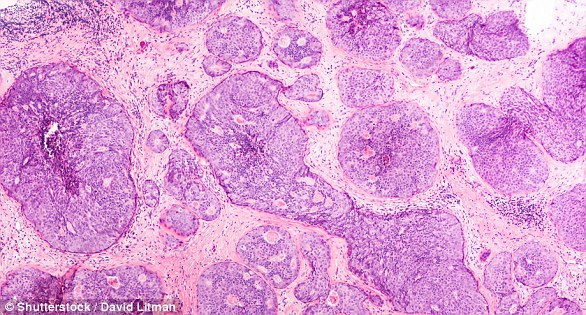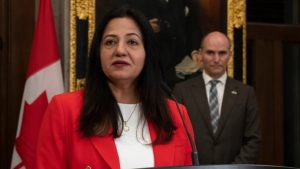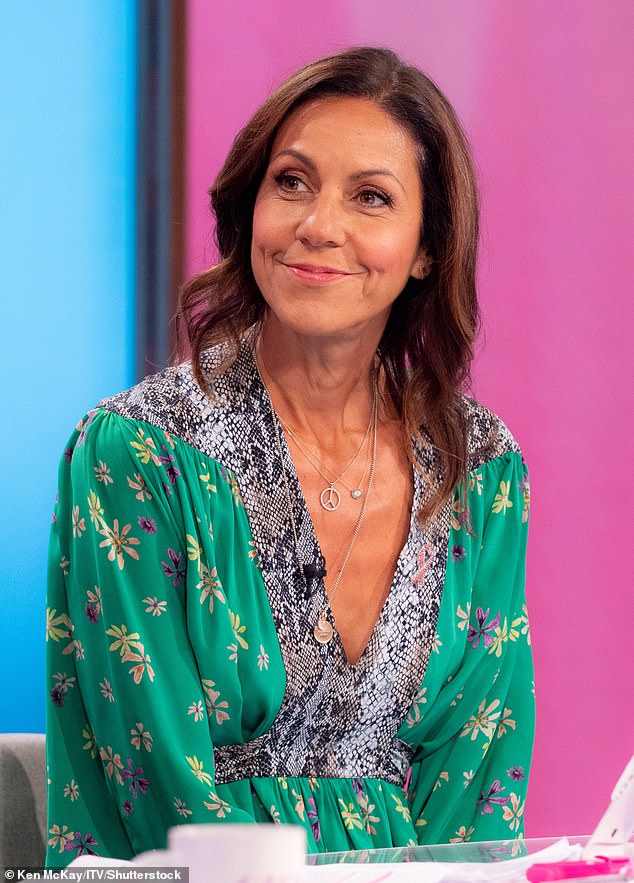
Julia Bradbury has spoken about her fears that having children later in life increased her risk of breast cancer.
The TV presenter, 52, announced her cancer diagnosis in September 2021 and underwent a mastectomy and had a 6cm tumour removed a month later.
Speaking about her diagnosis, Julia shared her fears that having her kids – Zephyr, 11, and twins Xanthe and Zena, seven – over the age of 40 increased her risk of cancer.

Worries: Julia Bradbury has spoken about her fears that having children later in life increased her risk of getting breast cancer
Julia had five rounds of IVF with her property developer husband Gerard Cunningham to conceive her twin daughters, after seeking treatment for endometriosis, which affects fertility.
Although Julia said she is proud to be an older mother, she shared her concern that having her children when she was over the age of 40 increased her risk of cancer.
‘I love motherhood and I think there are certain life skills you have more experience with when you’re older,’ she told The Sun.
‘But if you have your children later in life, that increases your risk of breast cancer, so does being a tall woman, as does being extensively on the Pill.’
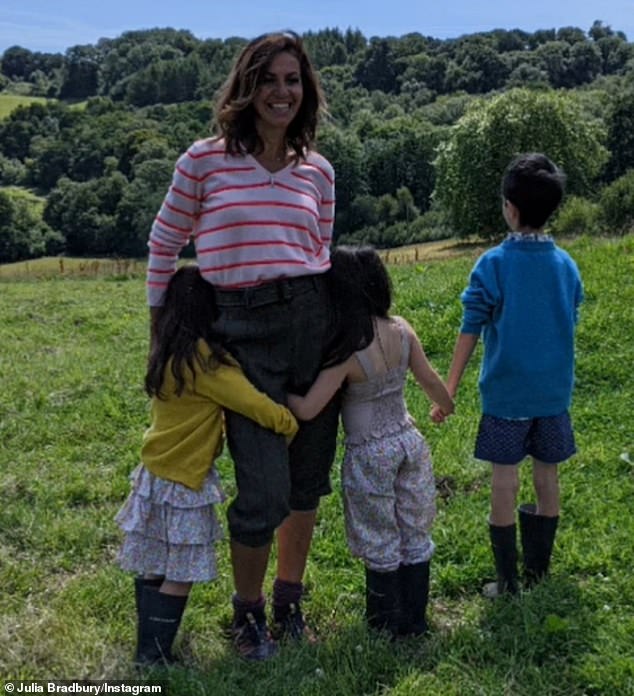

Family: Speaking about her diagnosis, Julia shared her fears that having her kids – Zephyr, 11, and twins Xanthe and Zena, seven – over the age of 40 increased her risk of cancer
According to the National Cancer Institute, the older a woman is when she has her first full-term pregnancy, the higher her risk of breast cancer.
It states that women who give birth to their first child when they are older than 40 have a higher risk of breast cancer than women who have never given birth.
Studies have also shown that taller women have an increased risk of breast cancer, while the contraceptive pill has been found to slightly increase the risk of breast cancer.
Elsewhere in the interview, Julia also spoke about how she has ‘reset’ her lifestyle since her cancer diagnosis last year.
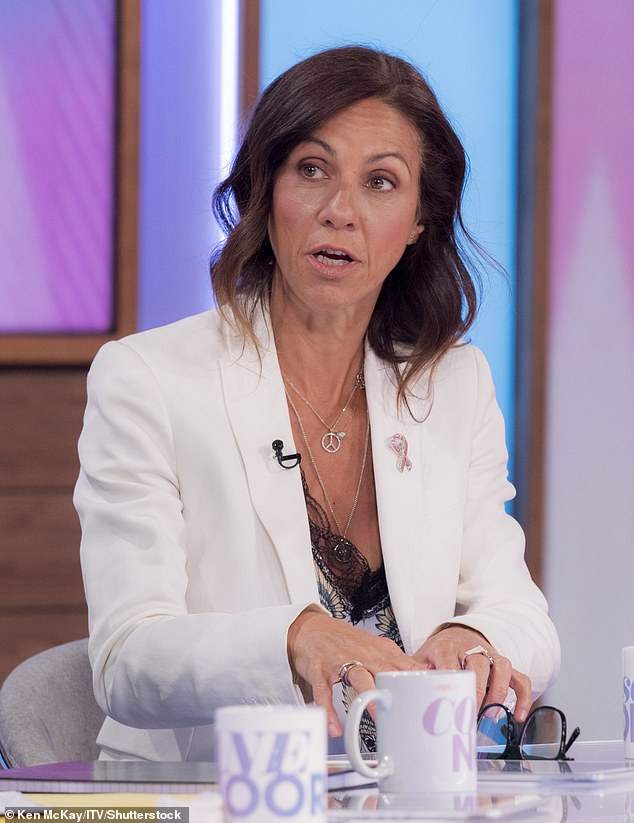

Health battle: The TV presenter, 52, announced her cancer diagnosis in September 2021 and underwent a mastectomy and had a 6cm tumour removed a month later
She said being diagnosed with cancer and getting a mastectomy has made her focus on the things that are important in her life.
‘So the real focus for me is what I do have in life, the statistics are that one in two of us will get cancer in our lifetime,’ she said.
‘It’s made me reset and relook at my health, my lifestyle and my nutrition.’
Julia said she has made her health a top priority and now meditates every day, does breathing work and enjoys doing yoga as she said her focus is now on ‘calming’ exercises.
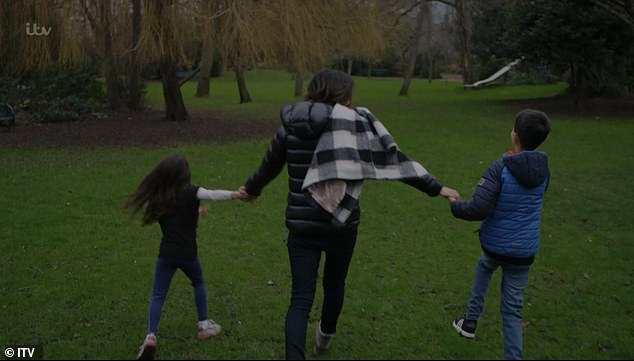

Risks: Although Julia said she is proud to be an older mother, she shared her concern that having her children when she was over the age of 40 increased her risk of cancer
She said she is grateful she will be able to see her children grow up and said she is doing all she can to stay healthy after her cancer treatment – which included the removal of the 6cm tumour, two lymph glands and her left breast.
Julia has been open about her diagnosis and treatment for breast cancer, appearing in a documentary earlier this year, Julia Bradbury: Breast Cancer and Me, where she laid bare her deeply emotional journey.
Her latest comments come after she revealed she has given up alcohol after reflecting on how she has ‘historically not been kind’ to her body.
Featuring in a shoot for Woman&Home magazine, Julia said she is doing everything in her power to decrease her odds against her cancer returning.


‘It’s made me reset’: Elsewhere in the interview, Julia also spoke about how she has ‘reset’ her lifestyle since her cancer diagnosis last year and is focused on her health
‘I’m a positive person, and I’m trying to use my resilience and health to make a positive impact on my body,’ she explained.
Revealing how she has now switched to a mostly plant-based diet, Julia declared: ‘My biggest motivation is staying alive for my children.’
Julia said she hasn’t ‘historically’ been kind to her body and said she could ‘drink everybody else under the table’ but admitted she has since stopped drinking alcohol.
She said: ‘Right now, I don’t feel comfortable drinking alcohol because if I drink one unit of alcohol a day, my risk of recurrence is between 5 and 6% across my lifetime. With four units a day, it goes up to 28%.’
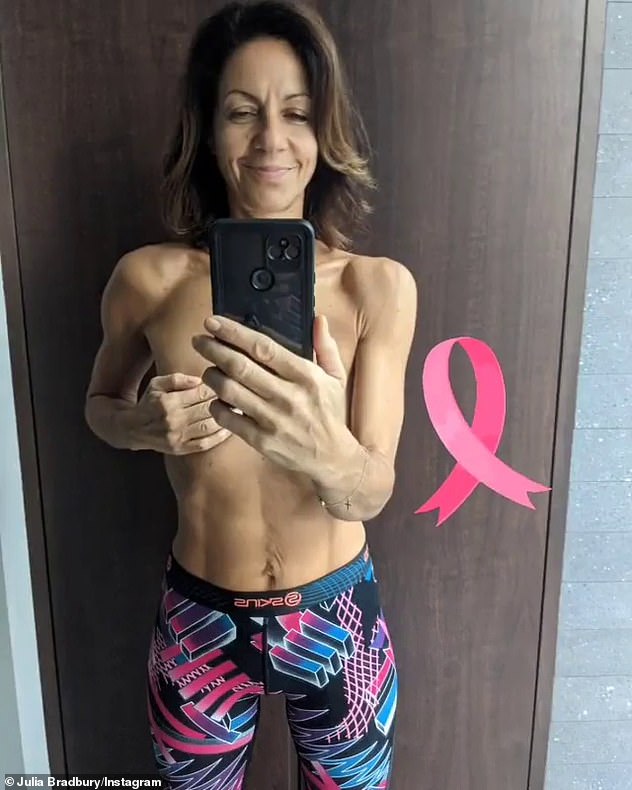

Candid: Julia recently revealed that the risk of her cancer returning is higher than average and detailed her experience learning to love her body after a mastectomy
The former Countryfile presenter underwent a mastectomy in October during which her breast plus two lymph glands were removed before reconstruction took place.
Julia recently revealed that the risk of her cancer is returning is higher than average and detailed her experience learning to love her body after the mastectomy.
Six months after undergoing her surgery, the presenter is having to come to terms with the knowledge that she does not yet have the ‘all clear’ from doctors.
Julia revealed to You magazine that she has ‘micro-invasions’ – tiny fragments of cancerous cells which have leached out of her milk duct and into her breast tissue.
Furthermore, genetic testing has shown that she has a higher than average risk of her cancer coming back.
She explained: ‘I’m in the top five or six per cent of women in the country in terms of the likelihood of recurrence.
‘That puts me in the ‘moderate risk’ category – higher than the average woman – but, look, it’s about percentages and perspectives.
‘The doctors have not found a huge spread of an aggressive cancer. I have lost my breast but been able to have an implant and keep my own nipple.
‘I feel lucky and grateful every single day, and I have to learn to live with this risk, to accept the fragility of life, without it consuming me.’
Source: | Dailymail.co.uk
